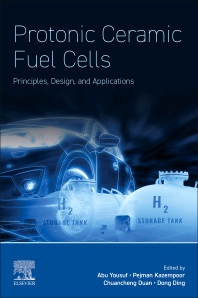Books in Physical sciences and engineering
Books in Physical sciences and engineering
- 1st Edition
- February 1, 2026
- Luis Cardoso + 2 more
- English

Biomechanics and Mechanobiology of Bone
- 1st Edition
- February 1, 2026
- Debasish Sarkar
- English

Metal-ion Capacitors
- 1st Edition
- February 1, 2026
- Muhammad Bilal + 1 more
- English

Biotechnology Processes in Bioenergy
- 1st Edition
- February 1, 2026
- Noor Ul Hassan + 2 more
- English

Anion Exchange Membrane Fuel Cells and Water Electrolyzers
- 1st Edition
- February 1, 2026
- Catalina Spataru
- English

Floating Energy Systems
- 1st Edition
- February 1, 2026
- Frede Blaabjerg
- English
- Hardback9 7 8 0 4 4 3 2 9 2 1 0 1
- eBook9 7 8 0 4 4 3 2 9 2 1 1 8

Encyclopedia of Renewable Energy Engineering
- 1st Edition
- February 1, 2026
- Prasanta Mandal + 2 more
- English

Applied Nanoplasmonics
- 1st Edition
- February 1, 2026
- Dilber Uzun Ozsahin + 4 more
- English

Medical Imaging and Behavioral Science
- 1st Edition
- February 1, 2026
- Abu Yousuf + 3 more
- English

Protonic Ceramic Fuel Cells
- 1st Edition
- February 1, 2026
- Qingling Zhang
- English
- Paperback9 7 8 0 4 4 3 3 0 0 2 4 0
- eBook9 7 8 0 4 4 3 3 0 0 2 5 7
